Community Education Environment
Chum Walk may be light on chum again; here’s why
This year’s Chum Walk on Nov. 23 looks to be almost as fish-free as last year’s. But given the variety of factors playing into the lack of flipping fins in Donkey Creek, hope is far from lost for future years, and this year’s Chum Walkers may still be able to see at least a few fishy friends.
The Pacific Northwest boasts a whopping seven salmon species (though two, cutthroat and steelhead, are considered trout, rather than proper salmonids). It’s the highest concentration of salmon species in the world, said Rachel Easton, Harbor WildWatch’s education director. In Donkey Creek at the txʷaalqəł Estuary, fish enthusiasts can usually expect to find chum salmon. Residents flock to the creek’s waters to see the chum run every autumn.
But last year, there were no fish — well, almost no fish.
“Last year, we saw one half of one fish,” Easton recalled. “Someone had eaten the front half.”
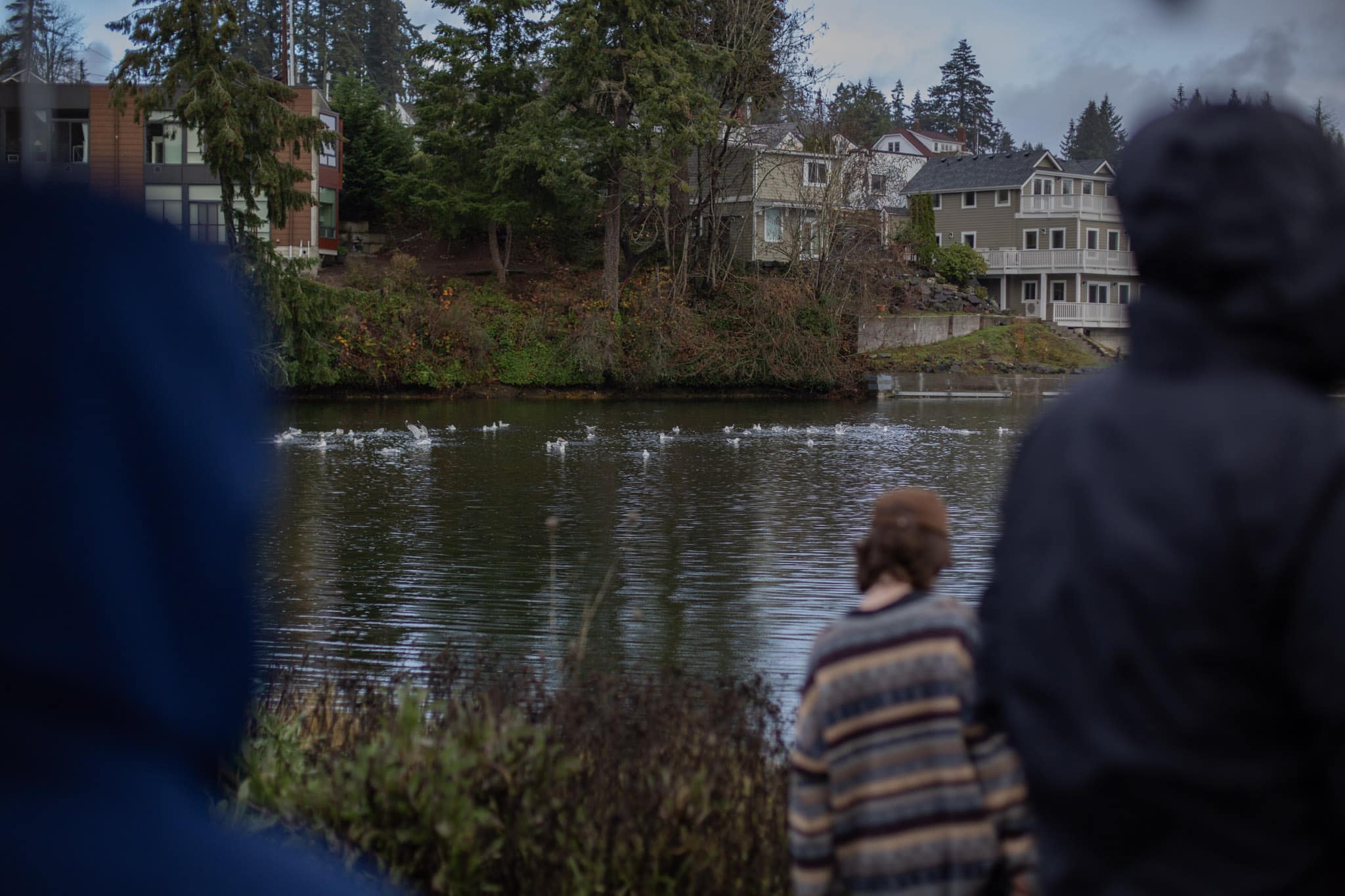
Seagulls can be seen in the waters of txʷaalqəł Estuary on Nov. 17, 2024. Beyond stand modern developments. Photo by Carolyn Bick. © Carolyn Bick
Several factors at work
Salmon are vital for healthy ecosystems here in Washington’s waters. Like every other plant and animal native to a particular area, they have evolved in concert with everyone else, supporting nutrient movement through the ecosystems they belong to.
Distinctly fewer salmon means a less healthy environment overall. Not only that, the loss of salmon means loss of jobs, recreation, and key food sources for humans.
So what — if anything — is out of whack in Donkey Creek?
Both Easton and Kat Barlow, Harbor WildWatch’s student intern, said a variety of overlapping factors present extra hurdles for Gig Harbor’s Chum population.
One main issue both Barlow and Easton pointed out was construction — specifically, the filling-in of the creek in 1949. That not only buried the creek itself, but also saw installation of a culvert.
The culvert conundrum
Culverts are pipes that run underneath construction projects to move water. The problem is, they essentially act as “firehoses” for salmon, meaning the fish shoot right through. There are no natural resting pools along the way, so salmon don’t get a chance to recuperate the way they would in natural conditions on their spawning journey.
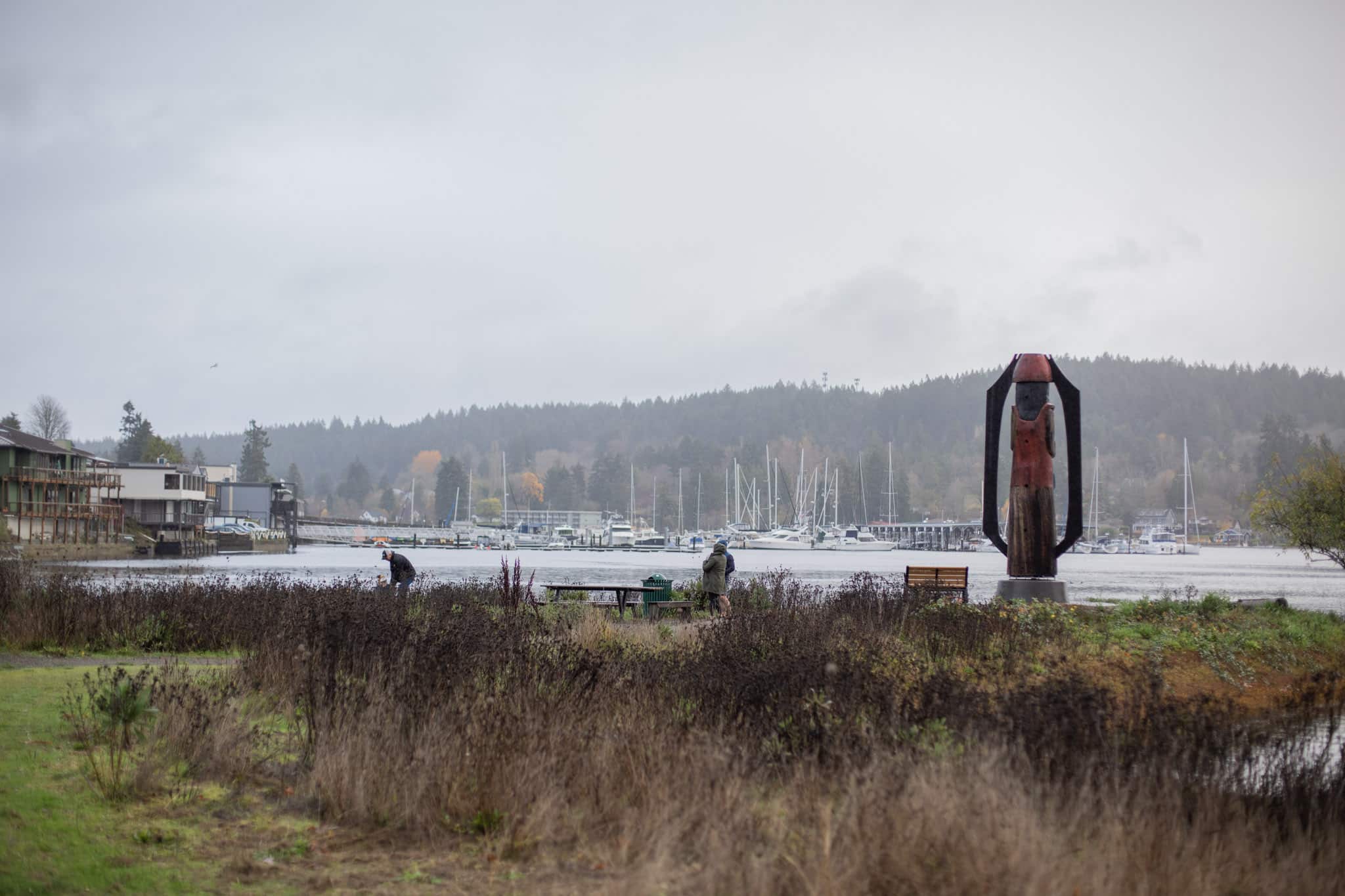
People stand near the statue of “Our Fisherman, Our Guardian,” right, in txʷaalqəł Estuary on Nov. 17, 2024. Modern development can be seen surrounding the estuary. Photo by Carolyn Bick. © Carolyn Bick
Culverts are present throughout Washington state, and adversely impact salmon populations statewide.
While the city removed the round culvert at the mouth of the creek and restored habitat there, another blocking culvert remains, Easton said. The city plans to remove a box culvert under Burnham Drive in 2027.
Ongoing construction throughout Gig Harbor has also impacted the chum population of Donkey Creek, Easton said. Construction washes sediment into the creek, changing the shape and “waterscape” of the creek bed itself by introducing sediment of a size inhospitable to salmon eggs.
Egg loss
Wait — the size of a few rocks can hurt salmon?
Turns out, it can: When female salmon are selecting nesting sites, Easton said, they look for gravel that’s roughly the same size as the eggs. In a stream environment, the constantly flowing water means that the lightweight, fragile eggs can wash away. The right gravel size anchors the eggs.
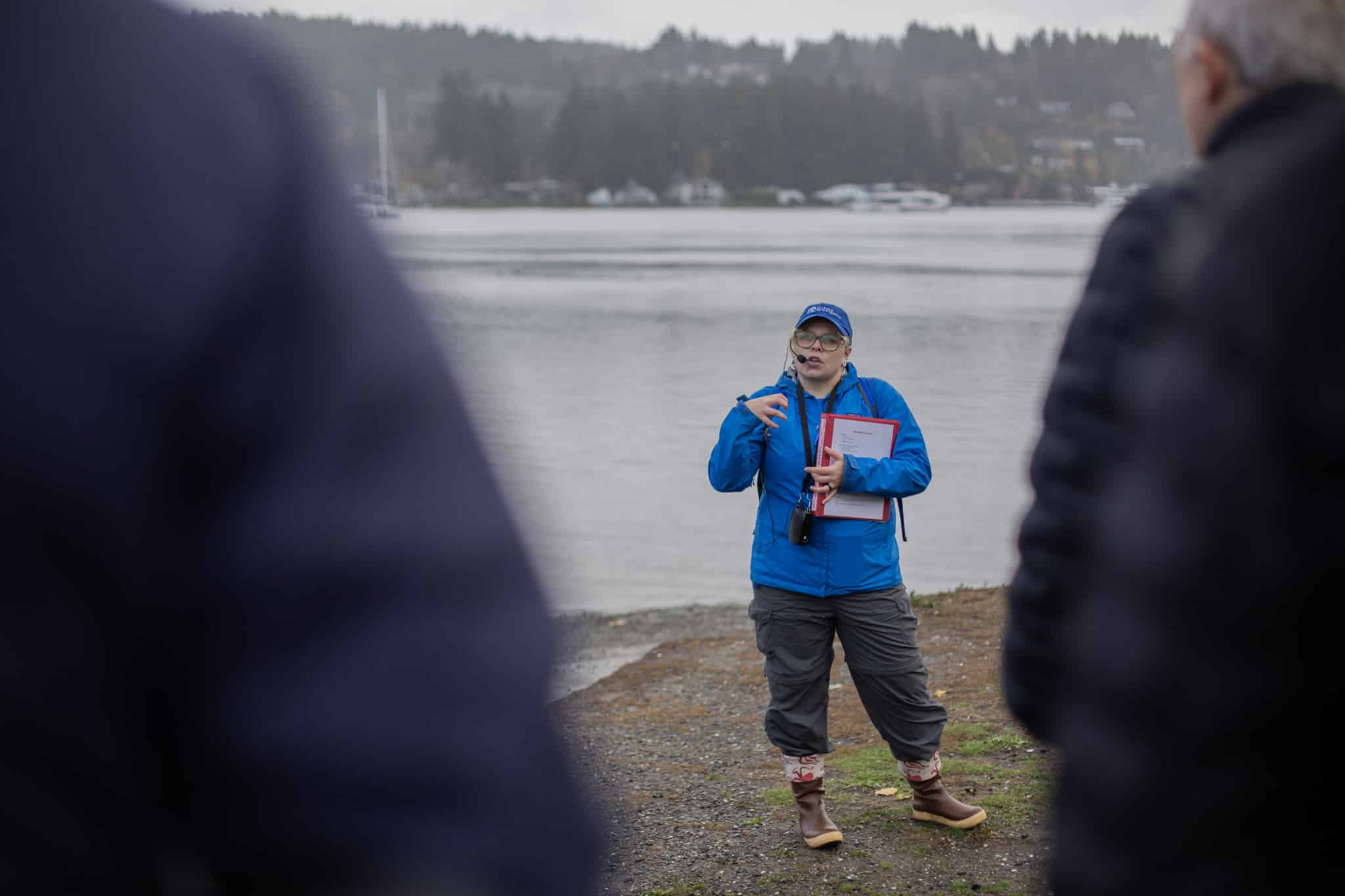
Harbor WildWatch’s student intern, Kat Barlow, leads a salmon tour near the statue of “Our Fisherman, Our Guardian” (not pictured here) in txʷaalqəł Estuary on Nov. 17, 2024. Photo by Carolyn Bick. © Carolyn Bick
So why not bury them, to ensure they don’t float away?
Well, that would smother the eggs — and that’s another problem the creek has faced with ongoing city and residential construction. Easton said a roundabout installed at Burnham Drive to Harbor Hill in 2018 significantly changed the creek bottom’s sediment, and the bed continues to see change from more recent construction.
Runoff from heavy rains and ongoing construction only exacerbates the issue. Easton said that the city does what it can during construction, but that doesn’t mean the creek and its inhabitants escape unscathed.
That, compounded by the fact that a normal egg loss without human meddling is 90%, does not bode well for salmon in the years following construction.
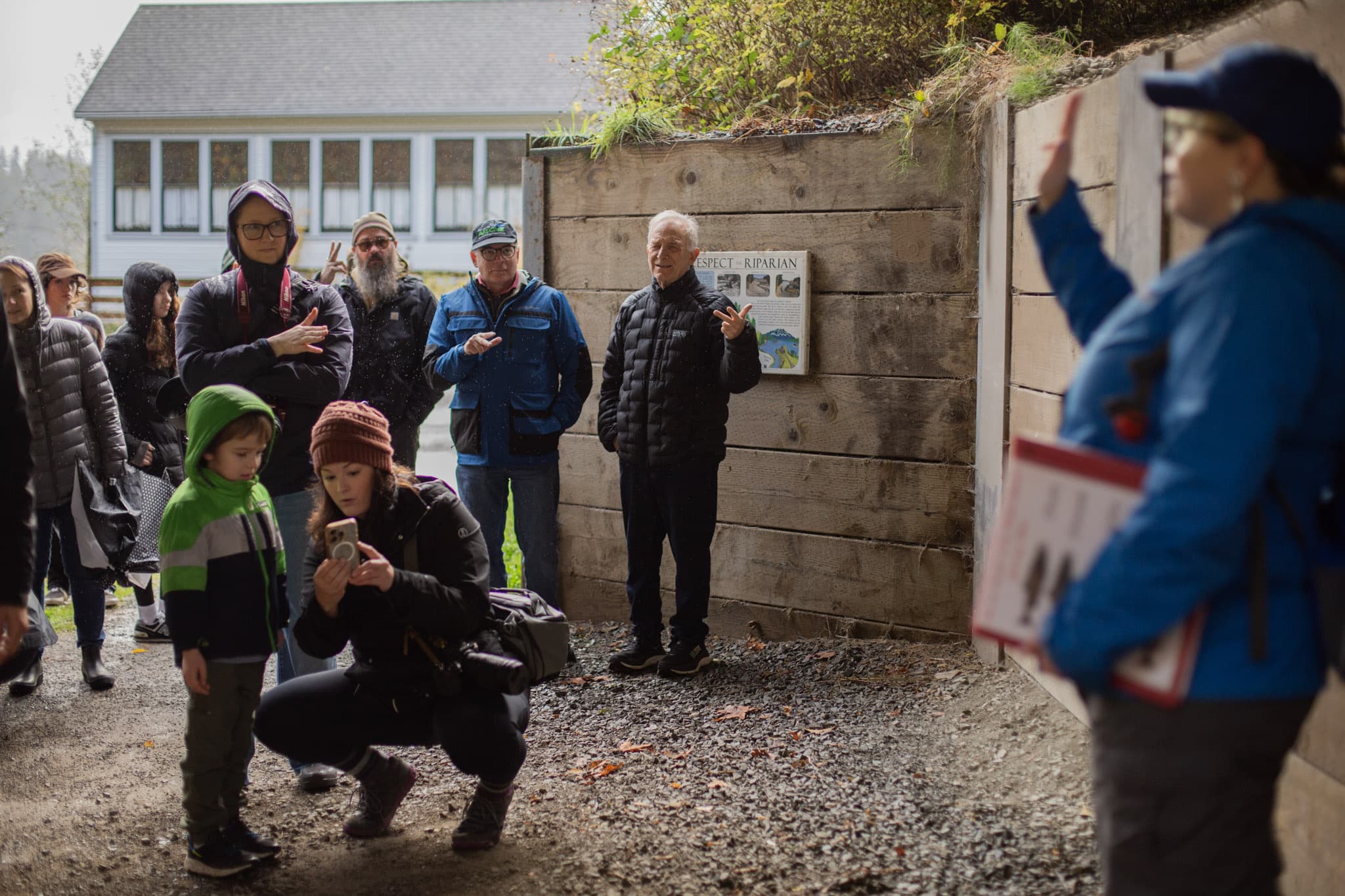
Kat Barlow, right, teaches tour attendees how to remember the five different kinds of salmon (not including the two species considered trout) who live in the waters of the Pacific Northwest, during the Salmon Tour on Nov. 17, 2024. Photo by Carolyn Bick. © Carolyn Bick
Minter Creek Hatchery is back
The city’s local fisherman’s club, the Gig Harbor Commercial Fisherman’s Civic Club, operates a remote incubator site at the creek to support the salmon population. The club has raised salmon in the creek at the incubator site since 1974.
Its efforts to support the salmon population have been frustrated by a series of outside issues in recent years, though.
The Minter Creek Fish Hatchery, which usually supplies the group with eggs, experienced a disastrous disease outbreak in 2016 and a generator failure in 2018. And due to COVID, the fisherman’s club was ultimately unable to get eggs from the hatchery between 2017 and 2022.
The club was finally able to seed the creek again in 2022. But chum take four years to return to their spawning grounds, and the creek hosted few wild salmon in the creek in the intervening years. The corresponding dwindling numbers of returning salmon in the creek appear, on their face, to support this idea.
But the fact that there were wild salmon there at all is key. That fact, alongside the area’s name in Lushootseed, seem to indicate that the creek is (or could be) a viable wild salmon habitat, Barlow said.
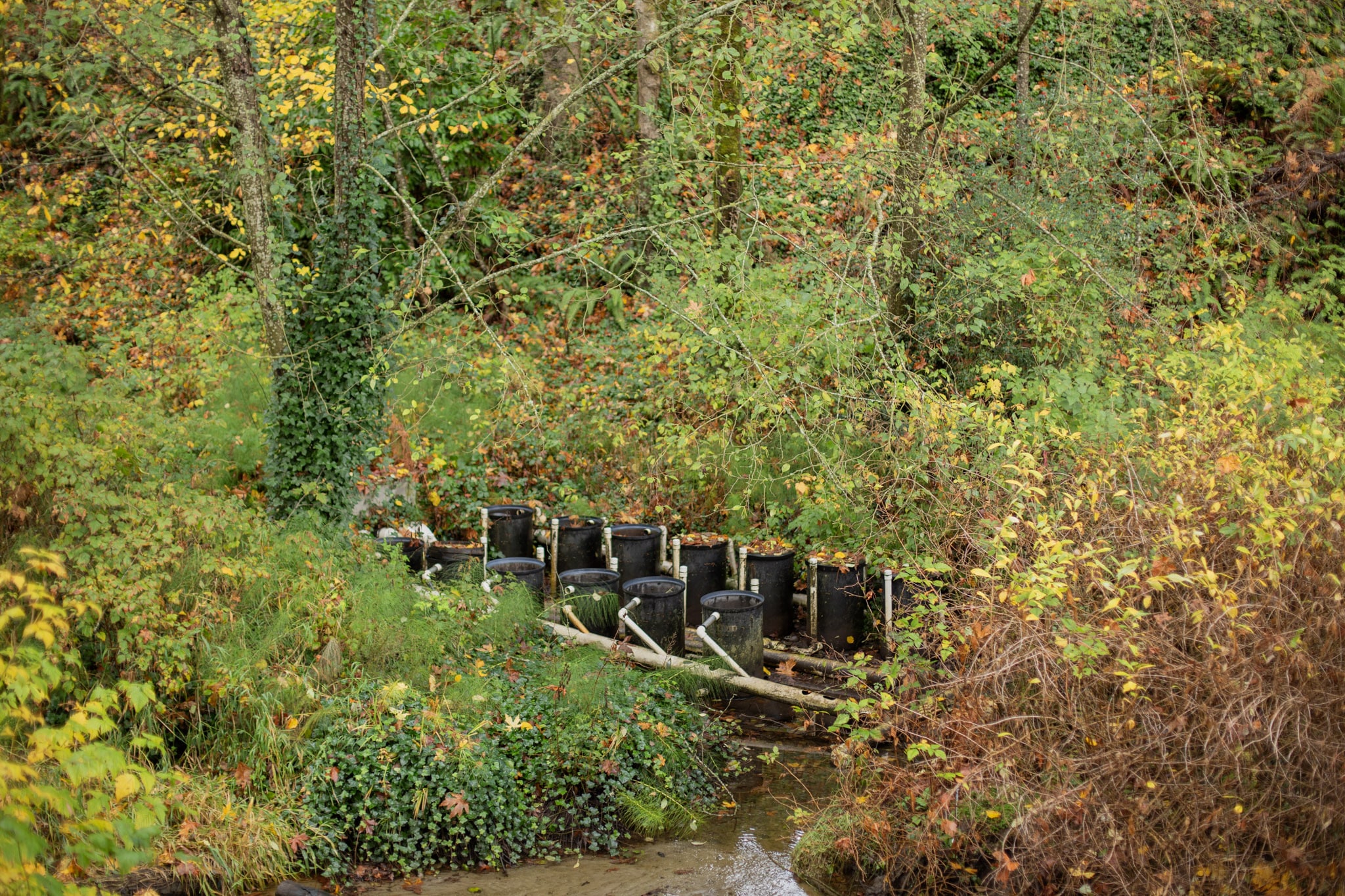
The Gig Harbor Commercial Fisherman’s Civic Club’s remote incubator site for chum salmon eggs sits in the water amidst the greenery at Donkey Creek on Nov. 17, 2024. Photo by Carolyn Bick. © Carolyn Bick
In Lushootseed — the language of the Puyallup tribe, the Indigenous people who have called the area known as Gig Harbor their home for thousands of years — the estuary is called “txʷaalqəł,” which means “the place where game exists.”
Barlow said that this indicates that, without the aforementioned construction, the creek may well support natural salmon runs.
Record-breaking runs around the state
The record-breaking salmon runs elsewhere around the state also appear to lean in favor of future creek restoration leading to a once-again viable habitat for our watery chums. Barlow told tour-goers that the overall chum run was predicted to be around 450,000 to 500,000 fish. Anecdotal reports indicate that many more than that are showing up for the spawning party.
There may once again be a man-made reason factoring into a higher run — or, rather, the lack of one. For the first time in three decades — since the 1990s — the fish don’t have to swim past Cooke Aquaculture’s Atlantic salmon farms. The fish farming company previously held all Atlantic salmon farms throughout the state.
Following a catastrophic collapse of a Cooke pen in 2017 that released upwards of 2,500 non-native, competitive Atlantic salmon into the waters of the Sound, the state’s Department of Natural Resources successfully canceled Cooke’s Atlantic salmon aquaculture permits in late 2022. The department found that Cooke committed a number of violations in its aquaculture practices throughout the region, which caused the pen collapse.
“They contribute heavily to pollution within the area, and they’re concentrating adult fish and the parasites associated with those fish in the same place where the out-migrating babies are having to travel past,” Easton said of Atlantic salmon, who are farmed in non-native Pacific waters. “And so this year, we’re seeing counts of chum are significantly higher. This is a great year for chum salmon and all the other creeks that have various monitoring. And this is the first year that those fish have not had to contend with the aquaculture.”
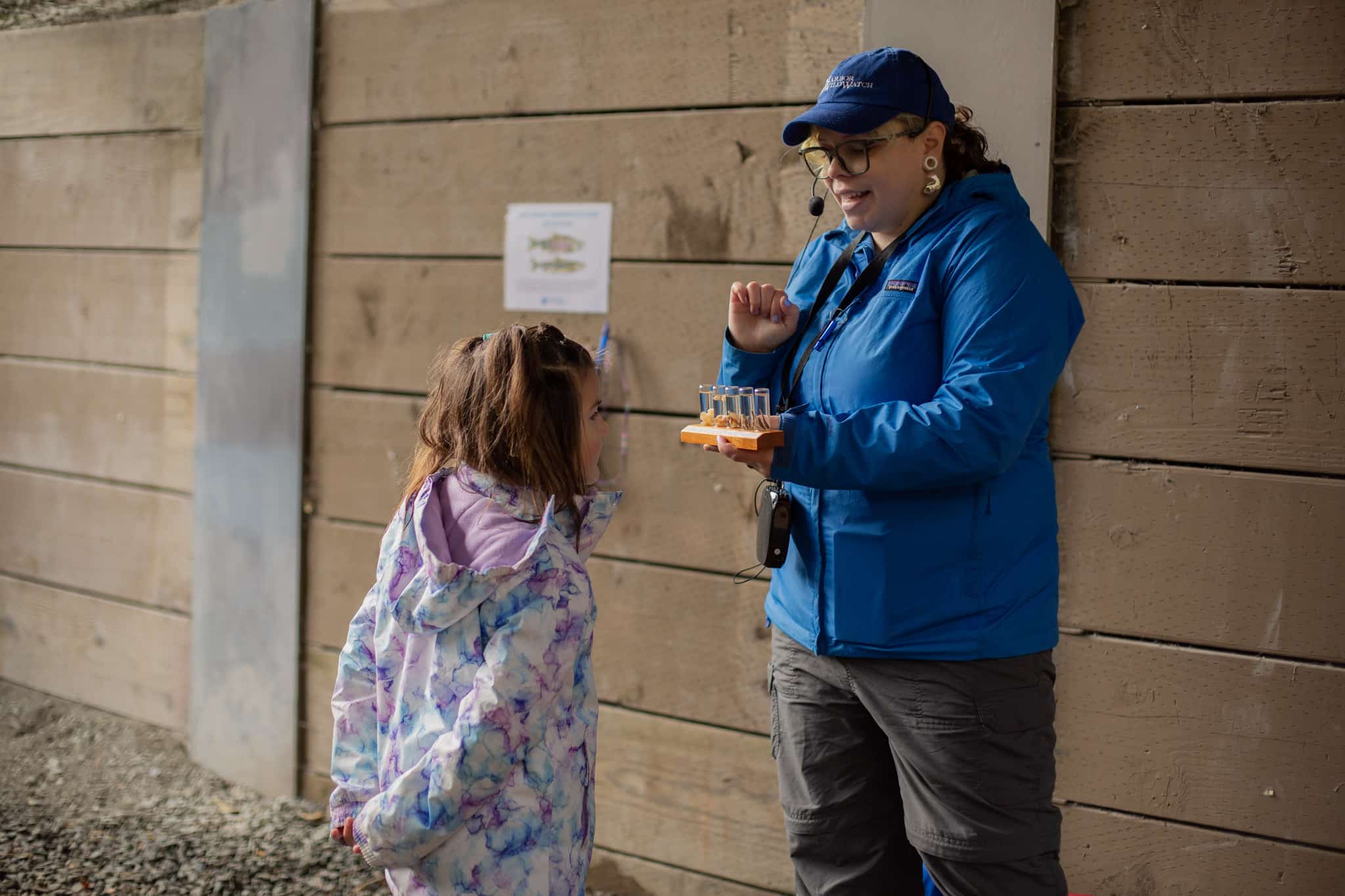
Kat Barlow, center right, shows a young tour attendees different stages of baby salmon, during the Salmon Tour on Nov. 17, 2024. Photo by Carolyn Bick. © Carolyn Bick
Why these salmon are pink
Still, just because these aquatic kiddos no longer have to swim past these farms means life is any easier for them.
The food that gives salmon their trademark color — literally salmon pink — is crab larvae. But for more than a decade, the Dungeness crab populations on whose larvae salmon feed have plummeted. This year marks the seventh year in a row that Marine Area 13, south of the Narrows Bridge, has been closed to crabbing. It’s through there the chum swim, on their way out of our waters here in Gig Harbor.
“Crab is one of the main foods that these salmon are eating as they’re going out,” Easton said. “So, if there aren’t crab here to support them, then it would follow suit that perhaps there are less or depressed numbers of salmon surviving.”
Chum Walk
Harbor WildWatch’s free-to-all Chum Walk is from 11 a.m. to 2 p.m. at the txʷaalqəł Estuary. Families can start at Austin Park, and fill out Salmon Passports by participating in interactive activities and visiting educational booths along the 0.25-mile gravel-paved trail. These passports can be turned in to the Harbor History Museum to be entered into a drawing for a salmon-y prize.
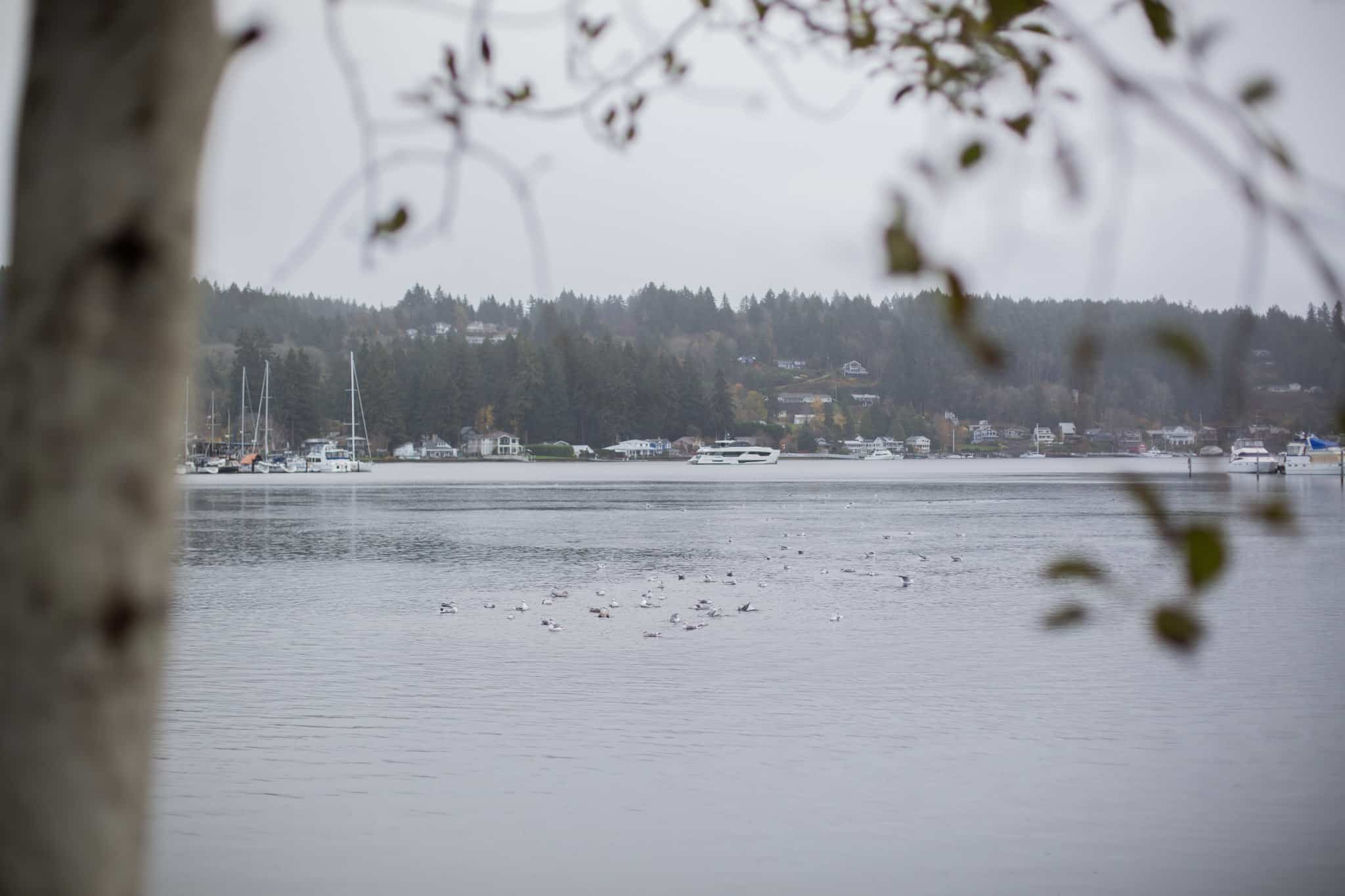
Seagulls float in the waters of txʷaalqəł Estuary on Nov. 17, 2024. Photo by Carolyn Bick. © Carolyn Bick

